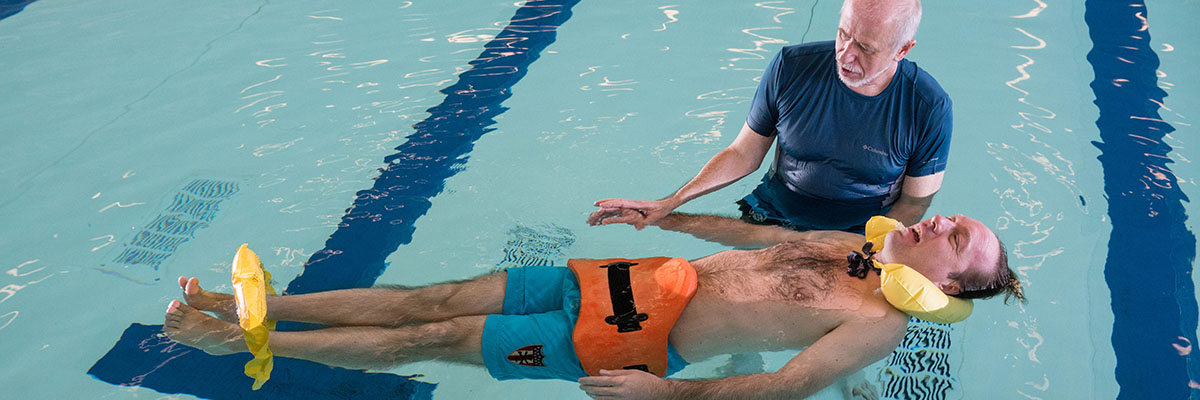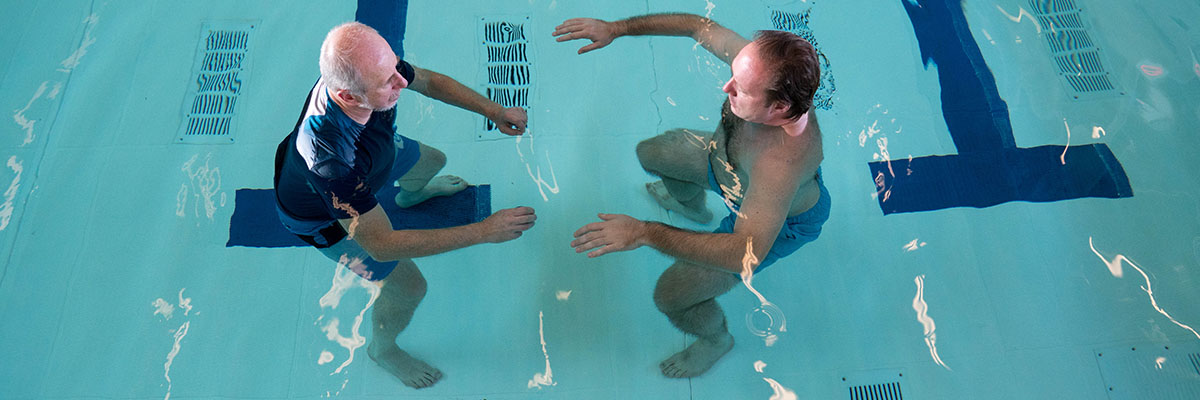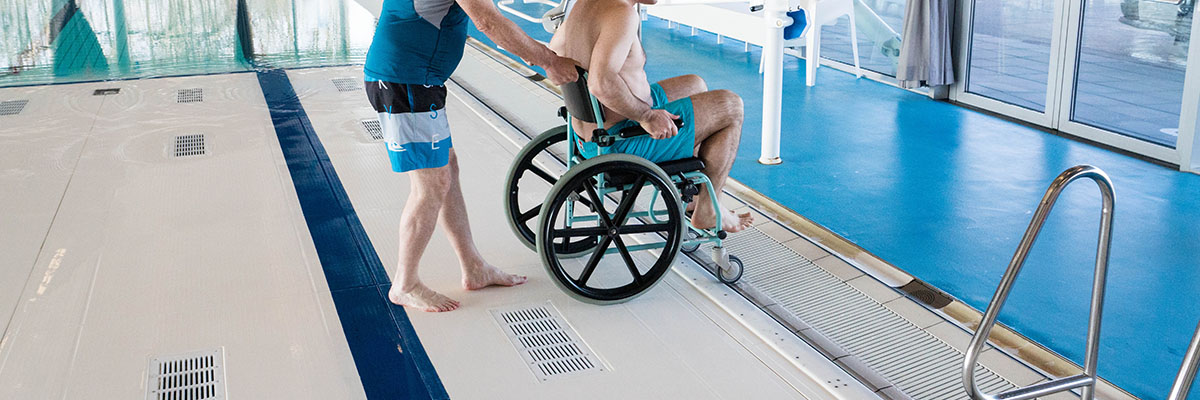The effect of hydrotherapy is widely recognized in the medical world. The movable pool floor specialist Variopool is no stranger to this type of aquatic therapy and rehabilitation in water. The installation of movable floors and bulkheads in therapy pools is indispensable for achieving maximum results. The various target groups for hydrotherapy can make optimal use of the therapy pool facilities, whereby the temperature of the swimming water can also be efficiently controlled.
Hydrotherapy itself is applied to patients who cannot take any great strain on their bodies. Once in the water, it becomes much easier for the patient to move and undergo the therapy. It also has great advantages for the therapist. We will look at this in more detail in this article.
Hydrotherapy is a form of physiotherapy in the water
First of all, Variopool is not a therapist and does not employ people for this purpose. However, we do cooperate with well-known therapists with extensive experience in the field of hydrotherapy and have organized workshops with them. This is to introduce users of our movable floors to various techniques such as the Bad Ragaz ring method, Halliwick method, Watsu method, Gait training and conventional water therapy. The therapist’s story fits well with our way of thinking in a swimming pool environment. In this article we will explain the great advantage of a therapy pool that is equipped with a movable floor.
Moving in water is increasingly used as a means to train endurance. Large groups of muscles can be used in water. The occurrence of local strain is therefore reduced and the oxygen transport system is not overloaded. Many muscles are used, but not overloaded. Due to the position of the bottom, more or less pressure can be exerted. Depending on the chosen method or the therapist’s wish.

First of all, the ease of use. It is not necessary for the staff to have technical knowledge to operate the floor. The floor is operated by a touch panel on the pool wall on the platform and set to the right depth. The various target groups for hydrotherapy can make optimal use of the therapy pool’s facilities, whereby the temperature of the swimming water can also be controlled efficiently. The temperature depends on the intensity of movement and can vary from 28 to 34 degrees. The temperature depends on the intensity of movement and can vary between 28 and 34 degrees. The aim of hydrotherapy is thus to increase the load capacity of various tissues, with effects on daily functioning, participation in society, satisfaction and well-being. Hydrotherapy is particularly suitable for anyone who has difficulty moving ‘on dry land’ due to physical limitations or (pain) complaints of an acute or chronic nature.
The movable pool floor can be adjusted to different depths to suit the rehabilitation process of the patient or athlete. By responding to the specific needs of the person in question, the recovery process can be accelerated.

Setting the ideal depth
Every therapy has its own preference for a certain depth in the therapy pool. For example, a water depth at which it should be possible to sink into the water up to the shoulders is about 140 – 160 cm, for hydrotherapy in general 100 – 130 cm, aqua jogging 180 cm and for swimming exercises between 50 – 180 cm. This adjustment is easy to make and takes hardly any time at all.
It is also possible to set a level difference in a therapy pool. The floor can then be inclined at a certain angle, for example, or different depths can be created by means of steps.
A movable floor is not only convenient for the patient, but it is also a great advantage for the therapist. For example, the floor can be set at the same height as the edge of the pool so that the patient can easily get on and the therapist can lower the floor. For the therapist this floor has a great advantage as it makes it easier to practise with the patient in the water. This is therefore less stressful for the therapist. If a patient is in a wheelchair or has difficulty walking and stairs are not an option, the floor can be adjusted to platform height. This means that the floor is just as high as the pool edge. Now these patients can independently and easily walk or ride onto the floor and the floor can be lowered to the desired depth. In addition to Hydrotherapy, Water Therapy is also ideally suited for Orthopaedics, Rheumatology, Sports Rehabilitation, Neurology, Paediatrics and Cardiac and Pulmonary Rehabilitation.
Extensions for the movable floor
The movable floor can also be fitted with, for example, a moving access staircase, a disabled platform or a ramp so that the rehabilitation patient can enter the pool independently. We have many years of experience with these solutions and can show and explain countless examples. Every solution is tailor-made. The installation of underwater treadmills is also possible. The advantage of the treadmills is that the patient does not have to turn around at the end of the wall, this offers a more efficient training. The underwater treadmill is then included in the design of the floor.
The effect of hydrotherapy (nowadays in English: aquatic physical therapy) is widely endorsed in the medical world. Variation in depth is a key factor in building up training load: therefore the installation of movable floors in the therapy pool is indispensable, and can be combined with underwater treadmills, whose value has been proven in numerous studies.
